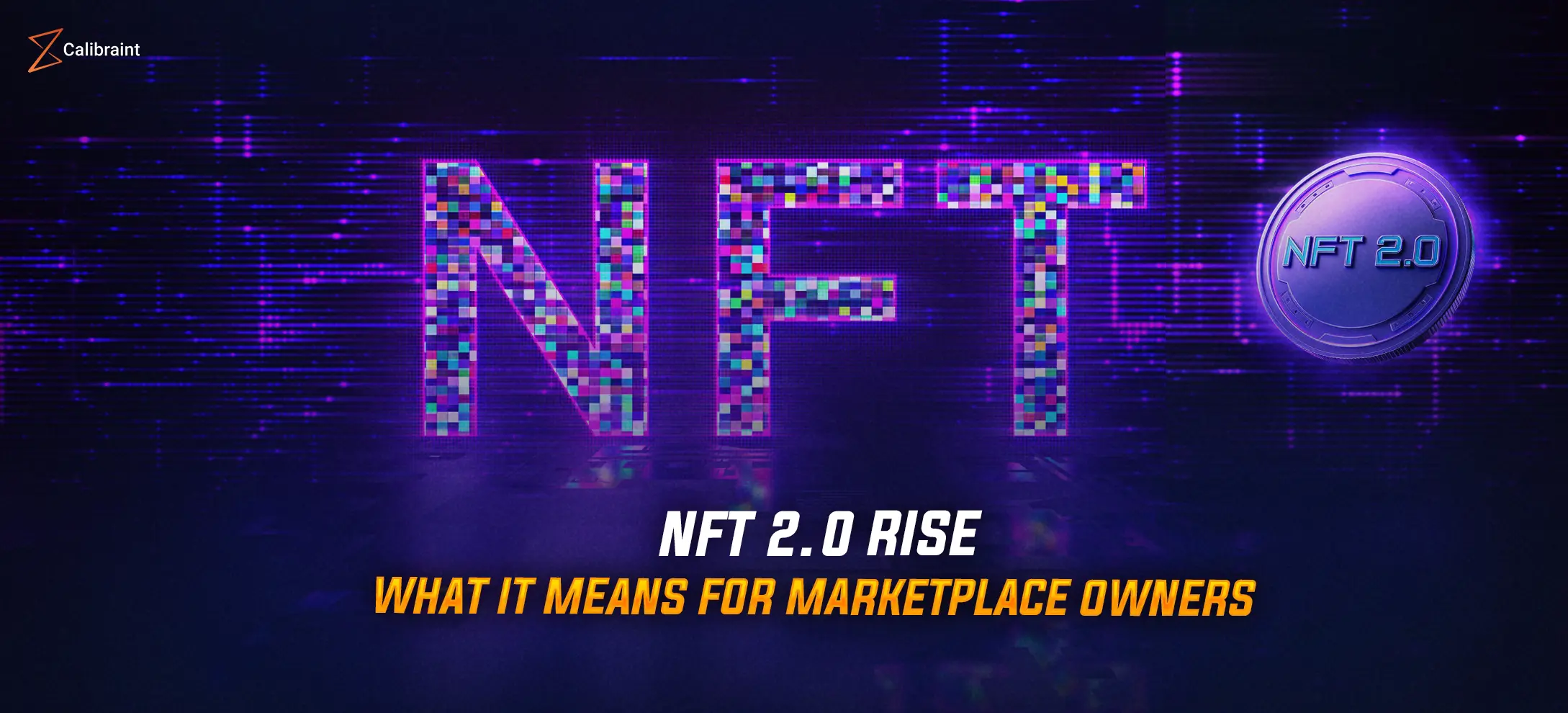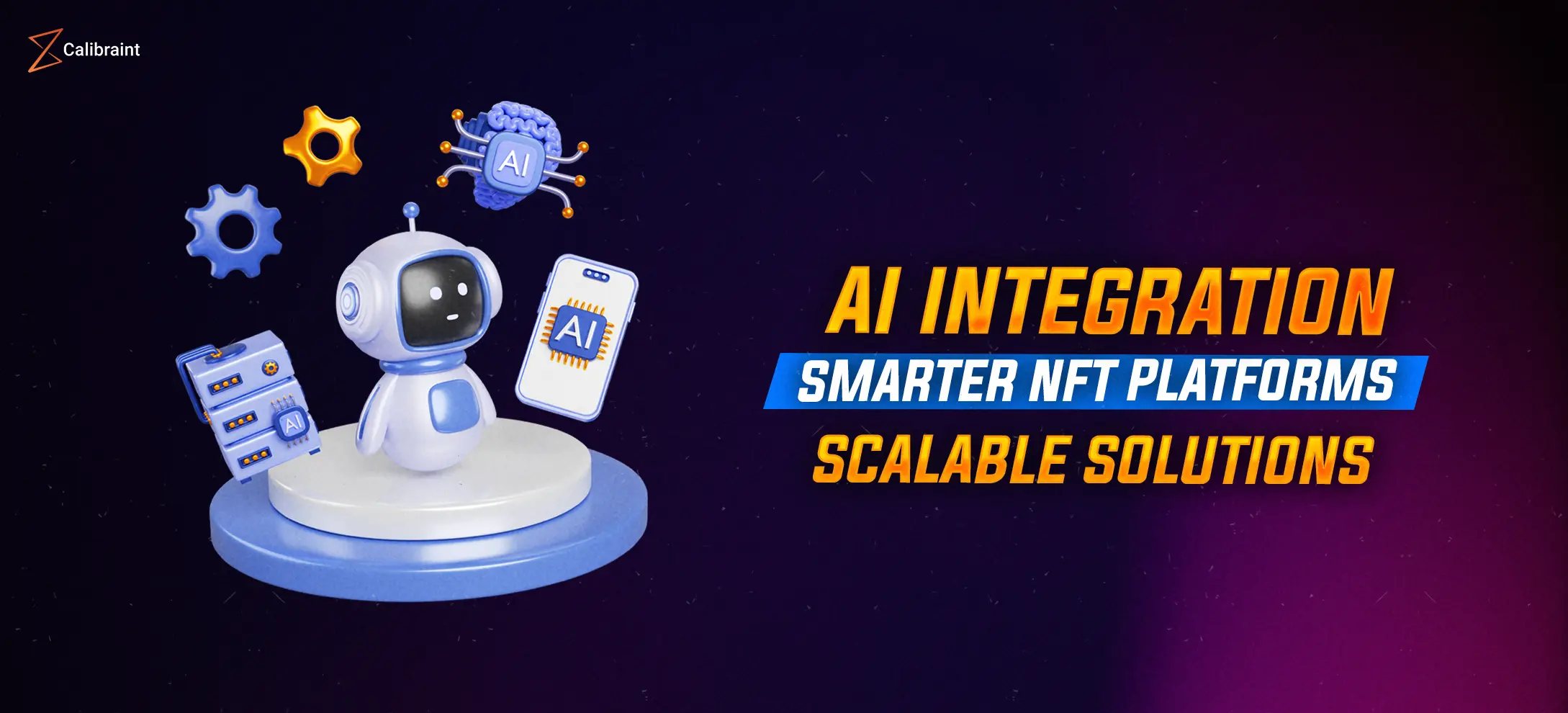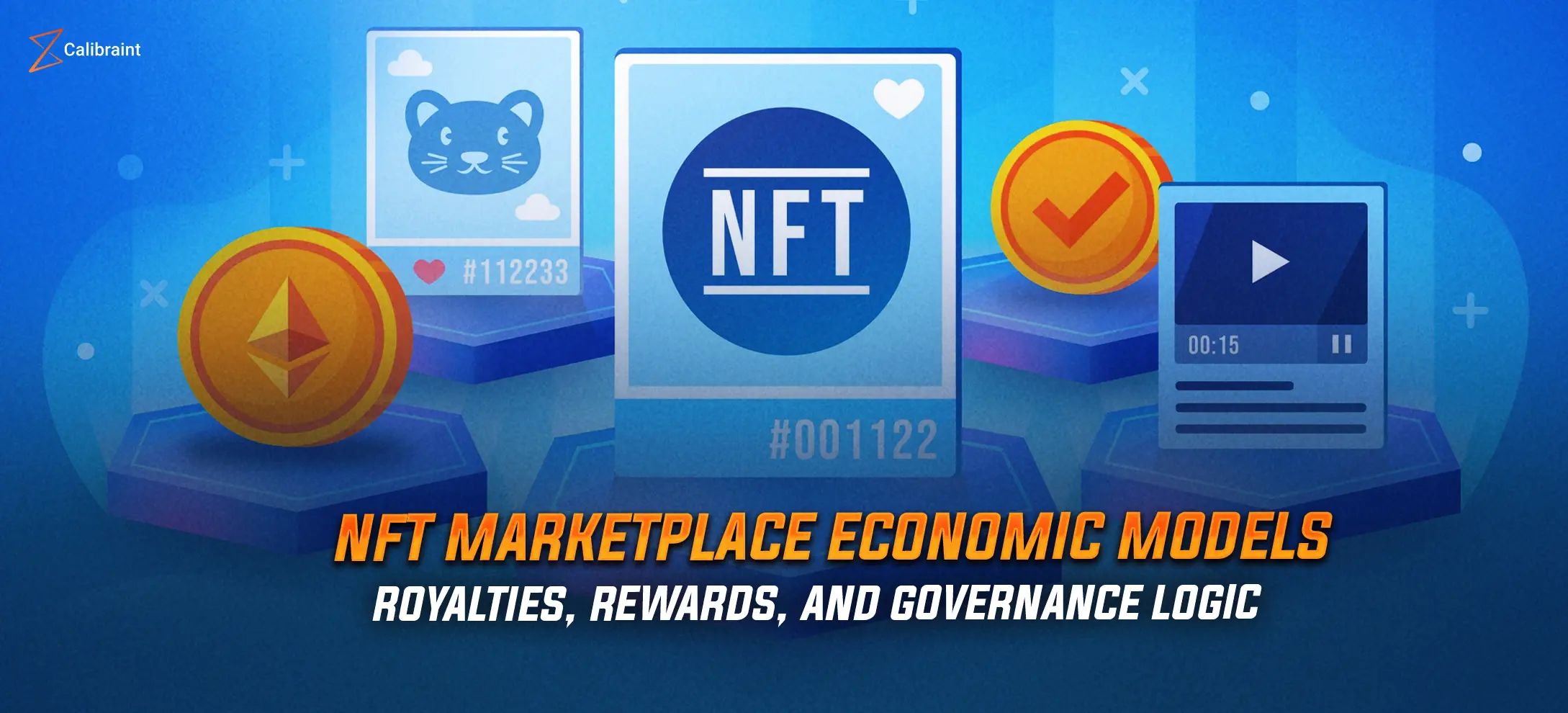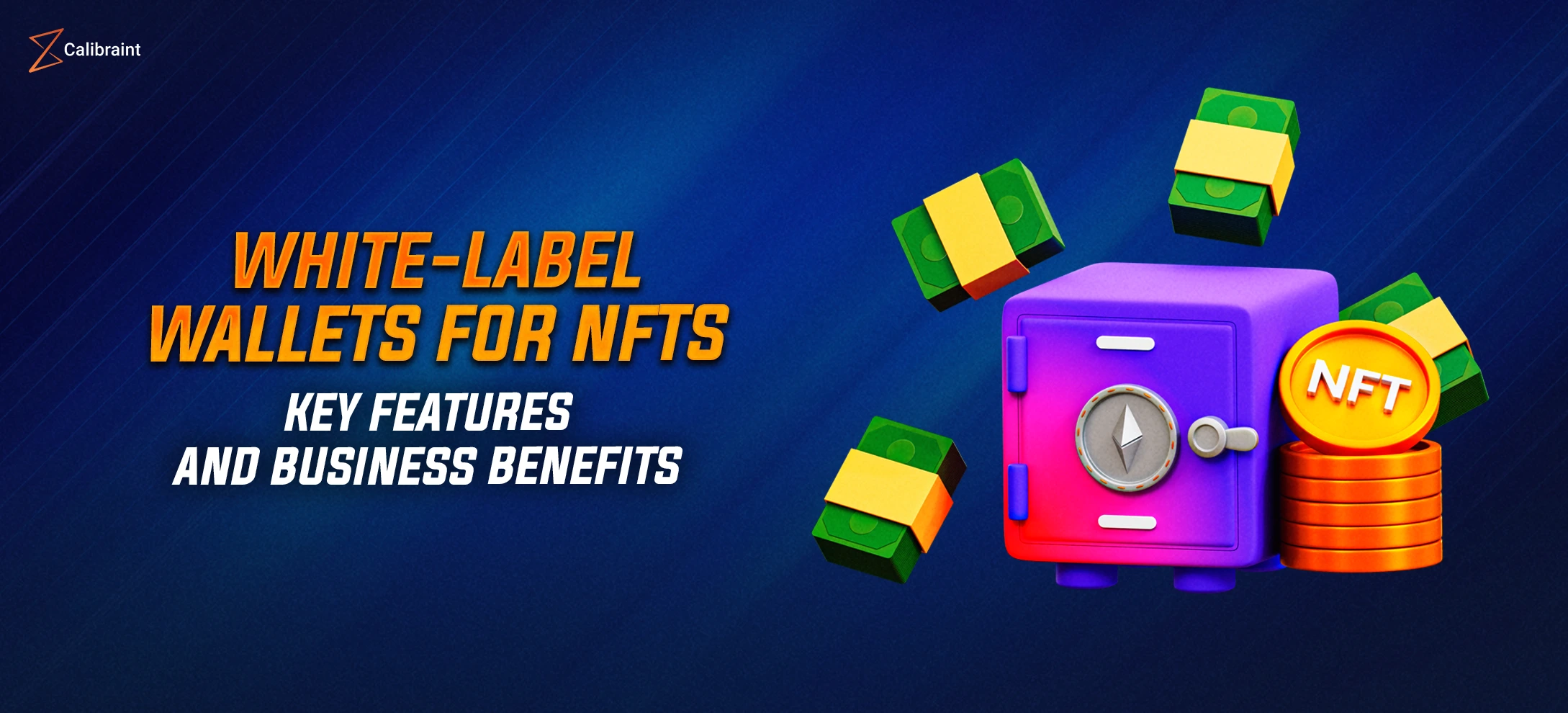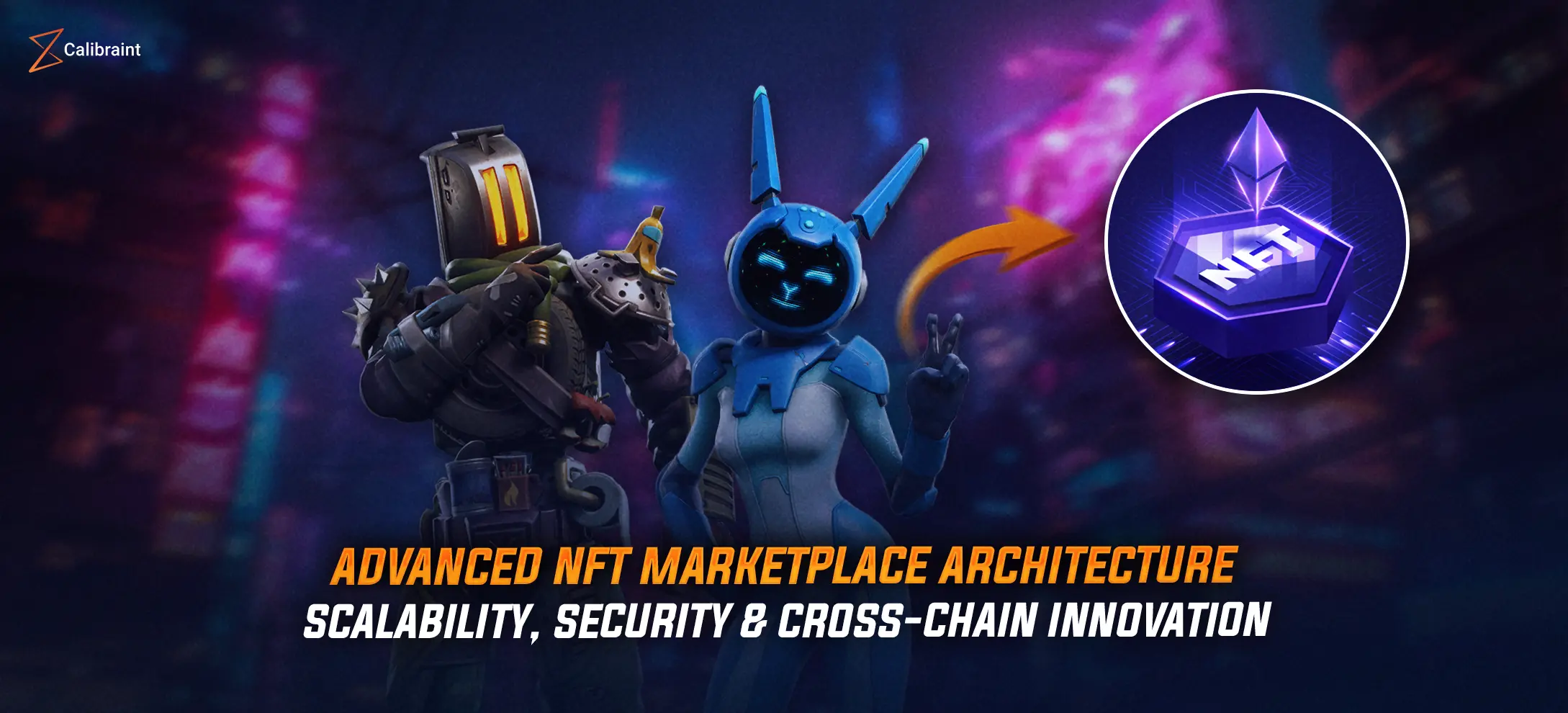NFT Swapping and Bridging: Powering the Next Wave of Digital Asset Liquidity
Calibraint
Author
September 17, 2025
Last updated: November 14, 2025
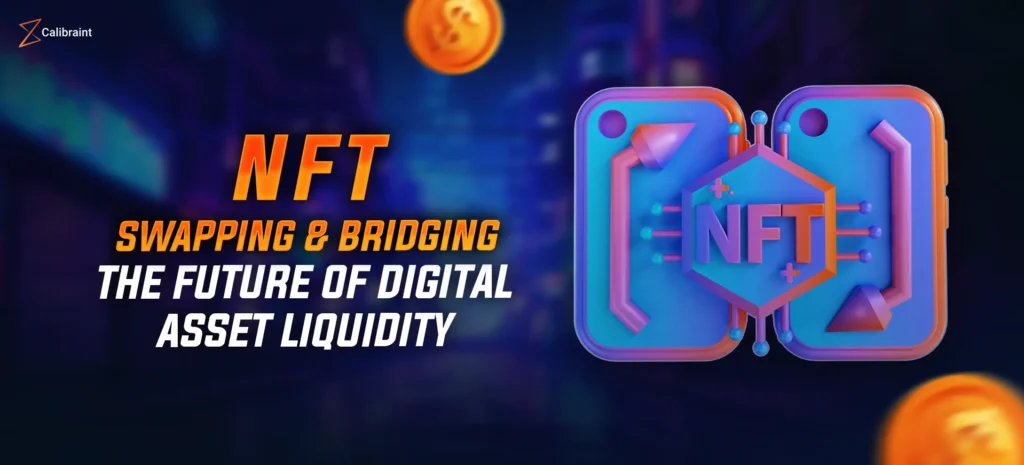
Your $10,000 NFT Is Stuck until It Can Do This
The world’s most expensive JPEGs have a dirty secret: they’re trapped.
That Bored Ape you spent five figures on? It only works inside its own blockchain. Your rare gaming weapon? It can’t be used outside the game it came from. Your digital art NFT? Invisible to collectors on other blockchains.
But Silicon Valley’s sharpest minds are engineering the greatest heist in crypto history. NFT swapping and bridging technology are set to revolutionize blockchain, turning static collectibles into liquid, multi-chain assets.
With NFT swapping and bridging, your NFT could grant VIP access on Ethereum. It could also work as gaming currency on Polygon and prove your ownership on Solana without extra steps.
The institutions pouring billions into Web3 infrastructure aren’t betting on prettier pictures. They’re betting on the moment when digital assets become as fluid as cash, as portable as your smartphone, and as powerful as your imagination.
In this blog, we’ll look at what NFT swapping and bridging really mean and how they solve the limitations of today’s NFTs. By the end, you will also explore why white label NFT tokenization is becoming a game-changer for enterprises and investors.
What are NFT swapping and Bridging?
NFT swapping and bridging serve as a method for exchanging and transferring digital assets across various blockchains.
NFT swapping enables users to trade one NFT for another, combine NFTs with cryptocurrency, or convert NFTs into cryptocurrency, thereby enhancing liquidity and offering greater portfolio flexibility.
On the other hand, NFT bridging guarantees that these assets maintain their ownership, authenticity, and functionality during transfers between distinct blockchain networks.
The Power of NFT Swapping
With white label NFT swapping, digital assets gain the liquidity and flexibility that traditional markets take for granted. Instead of being locked to a single form or chain, NFTs can now move fluidly between investment strategies, counterparties, and ecosystems.
The mechanics open three high-value exchange models:
- NFT(s) for NFT(s): Direct swaps between collectors, funds, or enterprises allow asset reallocation without touching fiat markets or losing exposure. It enables portfolio diversification in a purely digital context.
- NFT(s) for ‘NFT(s) + Crypto’: Hybrid deals bring liquidity into traditionally illiquid assets. By pairing NFTs with cryptocurrency, investors can execute structured trades that preserve ownership while introducing balance-sheet agility.
- NFT(s) for Crypto: Straight conversions into cryptocurrency deliver immediate liquidity, which is critical for enterprises managing treasury flows or investors executing timely exits. Unlike fragmented secondary markets, this process maintains valuation consistency and reduces friction.
This operational flexibility elevates NFTs from collectibles to financial-grade instruments, suitable for integration into tokenized investment services.
NFT swapping creates liquidity, while bridging extends that value across blockchains, making assets fluid and interconnected.
NFT Bridging: Turning Blockchains Into Borderless Markets
NFT bridging eliminates blockchain silos by enabling assets to move seamlessly across protocols while preserving provenance, metadata, and ownership history. It doesn’t just solve a technical problem; it changes the math. For example, an NFT minted on Ethereum at a $2,000 gas cost can be bridged to Polygon for near-zero fees or to Solana for high-speed trading. As a result, we are expanding reach, cutting costs, and opening up entirely new economic systems.
With NFTs moving smoothly across chains, the real issue for businesses is who owns the infrastructure and how to manage tokenized assets at scale without starting from scratch.
White Label NFT Tokenization: Unlocking Enterprise-Grade Solutions
Large enterprises are not waiting for perfect cross-chain solutions. They are already deploying white label NFT swapping and bridging platforms to gain blockchain functionality without development overhead.
Nike generated more than $185 million in NFT-driven revenue. Goldman Sachs and JPMorgan have quietly embedded blockchain infrastructure into daily operations, with the latter processing $300 billion in transactions through tokenized systems. BlackRock is already moving money market funds into tokenized formats. These aren’t experiments; they’re infrastructure investments for the next decade of financial services.
Enterprise-Grade Tokenization in Action
Digital tokens backed by real assets, governed by smart contracts, and accessible through traditional interfaces are becoming the new normal for institutional capital allocation. The question is not whether tokenization will replace traditional securities, but how quickly your competitors will gain first-mover advantages while you are still debating implementation strategies.
Enterprise-grade tokenization platforms are already processing billions in assets with the same regulatory compliance, audit trails, and institutional controls that traditional finance demands. The only difference is that these systems operate 24/7, settle instantly, and cost 90 percent less to maintain.
As enterprises unlock multi-chain interoperability through NFT swapping and bridging, the focus shifts from technical innovation to tangible financial outcomes.
Commercial Impact: From Illiquid Assets to Liquid Markets
Enterprises are transforming NFTs from static collectibles into tokenized investment services capable of generating yield, serving as collateral, and representing ownership in real-world assets. White-label NFT swapping and bridging platforms are at the center of this shift, enabling cross-chain liquidity that was impossible in traditional markets.
Consider the math: $4 trillion in real estate sits illiquid in traditional markets, earning returns only through appreciation and rent. Now imagine that same portfolio as digital tokens. One portion can be borrowed against on Ethereum, another collateralized on Polygon, and trades can occur for liquidity on Solana at the same time. The same asset generates multiple revenue streams across multiple blockchains.
Cross-Chain Value: Unlocking Multi-Market Potential
Cross-chain investment frameworks powered by NFT bridging and swapping expand market reach, reduce transaction costs, and unlock previously inaccessible economic opportunities. Enterprises can now convert illiquid assets into dynamic, multi-chain instruments, capturing value across borders while retaining provenance, ownership history, and regulatory compliance.
The shift from collectibles to financial instruments does more than improve efficiency. It changes how value moves across global markets and sets the stage for wider financial and institutional transformation.
The Broader Impact on Digital Assets and Investments
NFT swapping and bridging are establishing the foundation for digital assets to operate at scale. The combined effects of liquidity, utility, and adoption are accelerating their role from experimental tools to integral components of capital markets.
Increased Liquidity
NFT swapping and bridging expand trading from isolated collections into active, multi-chain markets. With assets flowing across Ethereum, Polygon, and Solana, liquidity pools deepen, spreads tighten, and price discovery begins to resemble established capital markets.
Enhanced Utility
NFTs are evolving from collectibles into multi-purpose digital instruments. By enabling cross-chain functionality, the same asset can serve as collateral, unlock experiences, or integrate into enterprise systems, driving new business models and revenue streams.
Broader Adoption
Institutional players are stepping in at scale. Tokenization of bonds, funds, and real estate by firms like BlackRock and Siemens shows that the infrastructure is expanding from niche pilots to mainstream finance. As enterprises deploy white-label solutions, adoption spreads from startups into global investment frameworks.
The Infrastructure Decision: Build the Future or Watch It Happen
NFT swapping and bridging have shifted from experiments to core infrastructure. According to Coinbase, 56% of Fortune 500 companies are already building or expanding on-chain projects. One clear signal: tokenized U.S. Treasuries reached $1.29 billion in May 2024, showing how quickly institutional capital is moving into digital assets.
This shift creates two paths. Organizations that act today will shape standards for the next decade. Those who delay will be forced to adopt frameworks set by others.
The First-Mover Advantage
Calibraint delivers enterprise-grade tokenization solutions, enabling businesses to transform NFT swapping and bridging into frictionless, scalable operations. With our white-label infrastructure, organizations gain the agility to capture first-mover advantage while competitors remain limited to experimental proof-of-concepts.
Three Strategic Actions for Leaders
- Immediate: Audit your digital asset exposure and identify cross-chain opportunities.
- Near-term: Launch pilot programs across core business functions to build operational expertise.
- Strategic: Position as an infrastructure provider, not just a participant, to define how trillion-dollar markets evolve.
The next wave of digital asset liquidity is here. The decision is whether to lead it or follow.
Calibraint
Author
September 17, 2025
Last updated: November 14, 2025






















